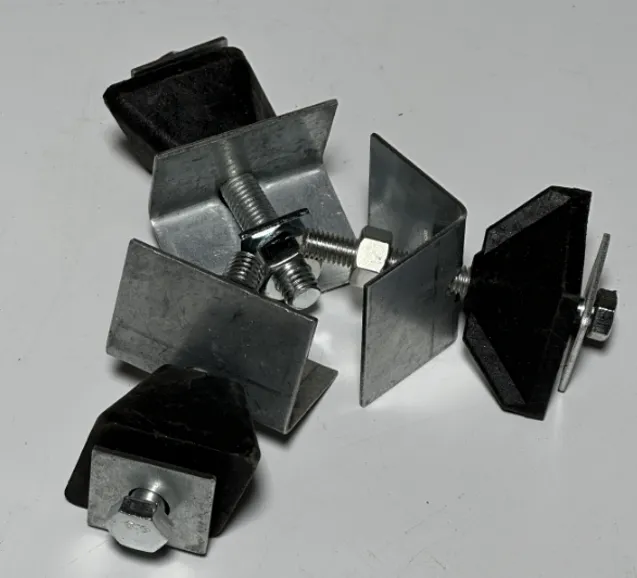loading...
- No. 9, Xingyuan South Street, Dongwaihuan Road, Zaoqiang County, Hengshui, Hebei, China
- admin@zjcomposites.com
- +86 15097380338
- Welcome to visit our website!
Installation Guide for Fiber-Reinforced Polymer Grating Systems and Best Practices
Installation of FRP Gratings A Comprehensive Guide
Fiber Reinforced Plastic (FRP) gratings have gained immense popularity in various industrial applications due to their high strength-to-weight ratio, corrosion resistance, and durability. They are widely used in environments where traditional materials, like steel or wood, may fail due to harsh conditions. This article outlines the important steps and considerations for the successful installation of FRP gratings.
Understanding FRP Gratings
FRP gratings are made from a composite material that combines fiberglass with a polymer resin. This composition offers several advantages, including resistance to chemicals, UV rays, and extreme temperatures. The lightweight nature of FRP also facilitates easy handling and installation, making it a preferred choice for flooring, walkways, and platforms in industries such as chemical processing, water treatment, marine environments, and construction.
Preparation for Installation
Before commencing the installation of FRP gratings, careful planning is essential. Here are several key considerations
1. Site Assessment Evaluate the installation area to ensure it meets the necessary specifications. This includes checking the load-bearing capacity of the support structure, as well as ensuring there are no obstructions that could interfere with the installation process.
2. Specifications and Compliance Adhere to local building codes and industry standards. Make sure the selected FRP grating type meets the required standards for safety, slip resistance, and load capacity.
3. Tools and Materials Gather all necessary tools and materials before starting. Common tools required for installation include a measuring tape, saw, drill, screws, and optional impact wrenches. Ensure you have all safety gear, including gloves, safety glasses, and a hard hat.
Installation Process
The installation of FRP gratings typically involves several steps
frp grating installation

1. Measuring and Cutting Accurate measurements are crucial. Measure the area where the gratings will be installed and cut the FRP panels to size, taking care to make straight, clean cuts to avoid damage. Use appropriate saws such as circular saws, which are often recommended for cutting FRP.
2. Dry Fit Before permanently securing the gratings, perform a dry fit to ensure all pieces fit correctly. This step allows you to make any necessary adjustments before final installation.
3. Support Structure Ensure that the underlying support structure is intact and compatible with the FRP gratings. Supports must be level and adequately spaced to prevent sagging. Common support materials include steel, aluminum, or wood treated for durability.
4. Installation of Gratings Begin securing the FRP gratings to the support structure. Typically, gratings are fastened using screws or clips, which should be placed at regular intervals as per the manufacturer’s guidelines. Ensure that fasteners are corrosion-resistant, especially in chemically aggressive environments.
5. Alignment and Leveling As you secure the gratings, continuously check for proper alignment and leveling. This step is critical for ensuring safety and functionality of the frame. Adjustments should be made as necessary before moving on to the next section.
6. Finishing Touches After all panels are installed, examine the entire installation for any gaps, misalignments, or loose fasteners. Ensure that all edges and corners are finished properly and that the area is free from debris. If slip-resistant surfaces are needed, additional coatings may be applied, depending on the application and manufacturer recommendations.
Maintenance and Safety
Post-installation, regular maintenance is essential to extend the lifespan of FRP gratings. Inspection should include checking for wear and tear, ensuring that fasteners remain tight, and cleaning to remove contaminants that may cause slippage.
In terms of safety, ensure that all workers involved in the installation process are trained and understand the proper handling techniques for FRP materials. Using appropriate personal protective equipment (PPE) can prevent accidents and injuries.
Conclusion
The installation of FRP gratings is a straightforward process if approached with careful planning and adherence to guidelines. The benefits of using FRP applications in various industries are significant, not only in enhancing safety but also in improving the longevity of installations. By following the outlined steps and considering best practices, you can achieve a successful FRP grating installation that meets both performance and safety standards.
-
GRP Structures: The Future of Lightweight, High-Performance EngineeringNewsJun.20,2025
-
FRP Water Tank: High-Performance Storage for Corrosive and Clean Water SystemsNewsJun.20,2025
-
FRP Square Tube: The New Industry Standard for Chemical and Structural ApplicationsNewsJun.20,2025
-
FRP Pultruded Profiles: The Ultimate Choice for Lightweight Structural StrengthNewsJun.20,2025
-
FRP Handrails: The Safer, Smarter, and Stronger Choice for Modern InfrastructureNewsJun.20,2025
-
FRP Grating: The Smart Solution for Durable, Lightweight Industrial FlooringNewsJun.20,2025
-
Why Choose a Galvanized Water Tank for Your Storage NeedsNewsMay.21,2025
